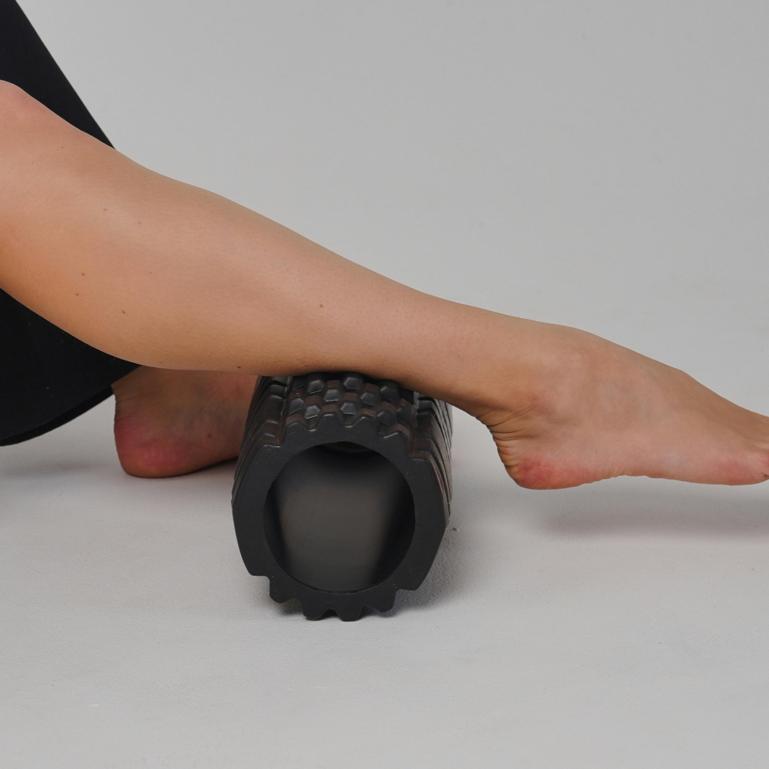
Optimal treatment with the Fascial Distortion Model (FDM)
The Fascial Distortion Model (FDM) is a manual therapy diagnostic and treatment concept based on the assumption that disorders in the connective tissue – the so-called fascia – cause pain, restricted movement, weakness or coordination-related instability. The aim of FDM therapy is to eliminate dthese mostly reversible disorders and thus improve the patient’s performance.
- 1. Fascia explained simply – meaning, structure and function
- 2. What is the Fascial Distortion Model (FDM)?
- 3. How does a fascial distortion occur?
- 4. What complaints occur with fascial distortions?
- 5. How is a fascial distortion diagnosed?
- 6. What is the optimal therapy for fascial distortions?
- 7. How is FDM treatment performed?
- 8. Frequently asked questions about FDM treatment
- 9. Aftercare and outlook
1. Fascia Explained Simply – Meaning, Structure and Function
What are Fascia?
Fascia (from Latin fascia = “band”, “bundle”) are thin, net-like layers of connective tissue that run through our entire body. They envelop individual muscles, muscle groups and even entire areas of the body. They can be imagined as an elastic “tension network” that provides stability, mobility and protection.
Fascia consist mainly of collagen fibers and elastin. This makes them both strong and stretchy. They give the muscles their shape, act like a natural shock absorber during movements and protect the body from injury. Fascia also play an important role in immune system: They support the body in defending against pathogens and are crucial for the healing of tissue after injuries.
What Types of Fascia are there?
There are three main types of fascia:
- Superficial fascia
- Lies directly in the subcutaneous tissue.
- Consists of loose connective tissue and fat.
- Serve as water and fat storage.
- Form a “passage layer” for nerves, lymphatic vessels and blood vessels.
- Have a cushioning effect and protect against impacts.
- Deep fascia
- Surround muscles, bones, nerves and blood vessels.
- Form a strong, fiber-rich network.
- Occur in various forms: as tendon plates, ligaments, tendons or joint capsules.
- Contain many sensors that perceive stimuli such as pain, pressure, temperature or vibrations.
- Can react to stress by tensing, relaxing or restructuring.
- Visceral fascia
- Envelop the internal organs with a double layer of connective tissue.
- Ensure that organs can slide smoothly against each other.
- Protect sensitive organs and hold them in place.
Why are Fascia Important?
Fascia are dynamic and adaptable. Superficial fascia can stretch a lot – for example, with weight gain or during pregnancy. Deep fascia are less stretchy, but are particularly important for body awareness and movement control.
Healthy fascia are crucial for:
- Pain relief
- Mobility and performance
- Regeneration after injuries
- Stability and protection in everyday life and during sports


2. What is the Fascial Distortion Model (FDM)?
The Fascial Distortion Model is a modern and patient-oriented diagnostic and therapy system that assumes that many pain and functional disorders of the musculoskeletal system are due to specific changes in the connective tissue. Fascia form a three-dimensional network of fine but robust connective tissue structures that run through the entire body. They envelop and connect muscles, tendons, ligaments, joints and organs and enable economical movements, provide elasticity, stability and are involved in metabolism.
If there are disturbances in these structures – for example, due to twists, compressions, indentations or adhesions – the tension distribution changes, and pain, restricted movement and functional problems can occur. The great advantage of FDM therapy is that the diagnostics within the model are based on the patient’s gestures and body language is based: The therapist observes exactly how the patient shows his pain and can draw conclusions about the type of fascial distortion. This targeted analysis makes the treatment individual, quick and precise.
3. How Does a Fascial Distortion Occur?
Fascial distortions can occur both suddenly and gradually. Often there is a triggering event, such as a sports overload, an accident or an unfavorable movement. Likewise, such disorders in the connective tissue can develop over a longer period of time, for example due to a one-sided posture or monotonous work – and movementsequences.
- Acute injuries such as ligament tears, sprains, bruises or strains can cause immediate changes in the fascial structures.
- Overloads in sports or at work lead to repeated micro-injuries that weaken the tissue and reduce its elasticity.
- Poor posture and lack of exercise promote “adhesions” and reduce the gliding ability of the fascia.
- Scar tissue after operations can restrict mobility and cause tension in neighboring tissue structures.
These factors disrupt the function of the fascia, so that they can no longer optimally fulfill their role as an elastic, frictionless connection system.
4. What Complaints Occur with Fascial Distortions?
The symptoms are varied and can vary greatly depending on the type and location of the fascial distortion. Those affected often report:
- Local, stabbing or pulling pain that occurs suddenly or with exertion
- Restricted mobility of individual joints or muscle groups
- An unpleasant feeling of tension or pressure in the tissue
- Pain that only occurs with certain movements or postures
- Radiating symptoms without clear findings in imaging procedures such as MRI or X-ray
It is characteristic that these complaints are often functional in nature. What does that mean? Macroscopically, there is often no change in the tissue visible in MRI or ultrasound. However, the function of the structure is disturbed and leads to complaints. Usually both the patient and the experienced fascia therapist are aware of these disorders. With suitable treatment techniques of the FDM, the function of the disturbed movement unit is usually improved immediately.
5. How is a Fascial Distortion Diagnosed?
The diagnostics in the Fascial Distortion Model are unique because they focus on the body language representation of the pain. Patients often unconsciously show how and where the pain is felt through certain hand movements.
The FDM therapist pays attention, for example, to whether someone indicates the pain at a specific point, runs their fingers along a line or circles an area. These gestures provide valuable information about the type of fascial distortion. In addition, the range of motion is checked, the tissue is palpated and the pain reaction to pressure or tension is assessed.
Imaging procedures such as MRI or ultrasound are usually only used to rule out other injuries – they are usually not necessary for the actual FDM diagnosis.
6. What is the Optimal Therapy for Fascial Distortions?
The optimal FDM treatment consists of manually correcting the altered fascial structure. The therapist uses various, sometimes powerful grips that specifically affect the affected tissue. Depending on the type of distortion, this may mean that tension is exerted along a fascial path, pressure is applied to an adhesion at a specific point, or a quick impulse is set to bring the structure back into its original form.
The goal is always the same:
- Restore the gliding ability of the fascia
- Normalize the tension distribution
- Reduce or completely eliminate pain
- Improve freedom of movement, coordination and performance
Many patients report that a significant improvement occurs after just one session, especially with acute problems. A longer series of treatments may be necessary for chronic complaints.
7. How is an FDM Treatment Performed?
The procedure of a session follows a clear scheme:
- Observation of pain gestures – The therapist analyzes how the patient shows his complaints.
- Medical history and examination – Comparison of body language with the description of the pain and manual examination.
- Manual correction – Application of targeted grips to release or reposition the affected fascial structure.
- Function test – Checking the mobility and pain reduction directly after the individual treatment techniques.
- Movement recommendations – Individual exercises for home to stabilize the result.
The perceived intensity of the treatment can vary depending on the findings and pain sensitivity. The therapy appointments are also adjusted accordingly and many patients report an immediate relief afterwards.
8. Frequently Asked Questions about FDM Treatment
Is the treatment painful?
The treatment can be temporarily painful, as it specifically targets hardened or adhered fascial structures. This occurs especially when the normally elastic and easily movable tissue cannot yield to the therapist’s or physician’s treatment pressure as it usually would.
How quickly does FDM treatment take effect?
Often, improvement can already be felt during the first session. The duration of the complaints prior to treatment is not decisive for the number of sessions required. Rather, the body’s adaptive mechanisms play a key role. Some conditions may persist for years and then disappear after successful fascial therapeutic correction. However, various fascial distortions often overlap and must then be corrected one after another.
Are there any side effects?
Mild bruising, similar to a contusion, or muscle-soreness-like discomfort may occur, but these usually disappear within a few days.
9. Aftercare and Outlook
After an FDM treatment, the body should be given time to regenerate. This does not mean sitting down and waiting. Light exercise, possibly gentle stretching exercises and sufficient fluid intake support the healing process. Sporting activities should be reduced in intensity for one to two days.
In the long term, regular, varied training combined with targeted fascia training, a healthy diet and a balanced load can help to avoid renewed fascial distortions. The FDM therapy is therefore not only an effective form of treatment, but also a valuable building block in the prevention of complaints of the musculoskeletal system.
Further information can also be found on the website of the European Association for FDM “EFDMA” at: www.fdm-europe.com
